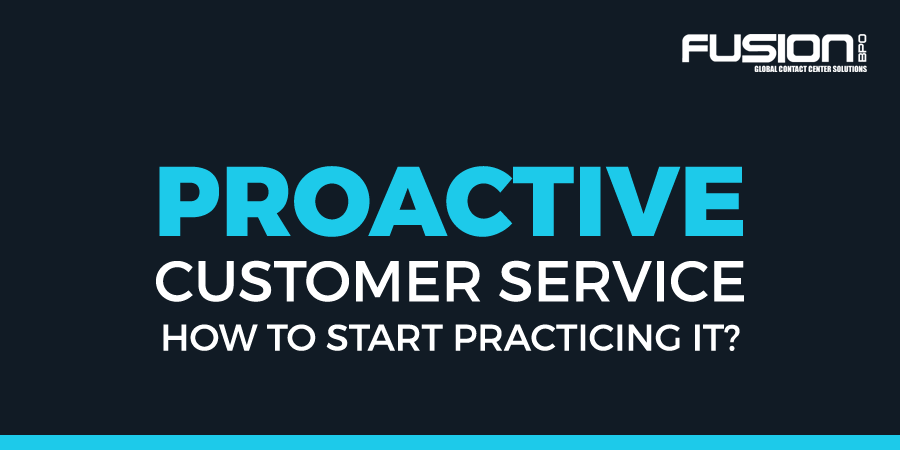Customer experience is the need of the hour. Great customer experience can make your customers happy, and happy customers result in more business. That is why more and more businesses are trying to provide their customers with state-of-the-art customer service.
Today, when customers expect nothing but the best treatment from the company, standard customer service cannot offer the same level of satisfaction. For that, you need to shift from reactive to proactive customer service.
What is Reactive and Proactive Customer Service?
Reactive customer service is when a customer has a question while browsing your website, contacts you via different communication channels and waits for a response. This is the standard customer service that most companies provide.
Proactive customer service means anticipating customer issues and addressing them proactively through various communication channels (including forums, FAQs, knowledge bases, and instructional videos). Reaching out to your customers to inform them about a problem before they have experienced it is an example of proactive customer service. Proactive customer service has the power to get your customers to live for your brand.
Why is Proactive Support Important?
Proactive customer support offers several benefits for your business. These are:
- Increase customer loyalty – According to a report by Enkata, taking initiative in your support can boost customer retention rates by 3-5%.
- Decrease support calls – Being proactive can help your business identify issues and resolve them before they turn into problems, and thus can reduce the number of tickets you receive.
- Take charge of communication – By being proactive, you can get involved in what your customers say about your brand privately and on social media. You will also get a chance to engage with them in a way that puts your business in a favorable light.
- Acquire new customers—By being proactive, you will have opportunities to reach out to prospective customers and encourage them to switch to your brand.
- Retain existing customers—Proactively reaching out to your customers, even when they haven’t mentioned you directly, deepens the relationship. With social media customer service on the rise, you will need to go the extra mile to exceed their expectations of good customer service.
- Create brand advocates—Proactive customer service offers the chance to turn your customers into brand advocates. Studies show that a happy customer will tell at least three people about their experience.
- Protection against escalation – You can avoid a social crisis by identifying negativity surrounding your brand early.
This shows that proactive customer service is the way to go. While reactive customer service will cover your base, proactive customer service will take customer satisfaction and loyalty to a new level. According to a study by inContact, consumers were generally positive about proactive service. 87% of adults surveyed are happy to be contacted proactively by different companies regarding customer service issues.
So How to Introduce Proactive Customer Service in Your Business?
Here are a few easy tips:
1. Ask for Feedback
Customer service is about giving customers what they want. So, the first thing you have to do is find out what they want. The best way to do so is by asking them. If you check on your customers regularly, you may identify your weaknesses and correct them before your customers start to resent you.
2. Announce Your Mistakes Before Customers Find Out
Have you identified a problem in your product, service, or operations? It is better that your customers hear about it directly from you instead of finding out themselves. Admitting your mistake, apologizing, fixing the issue quickly, and/or offering a discount to compensate for their inconvenience can help you earn your customers’ trust, avoid bad PR, and ensure that the customers do not go anywhere.
3. Reward Customer Loyalty
Offering rewards for regular business is a good loyalty-building tool. Loyalty programs demonstrate your company’s desire to reward customers as a token of thanks. You can proactively reach out to customers with offers in between purchases. This can be a chance for positive customer interaction that strengthens their relationship with your company. For example – you can send a discount voucher to your customers a month before their subscription with you ends, compelling them to renew the subscription.
3. Pay Attention to What Your Customers Are Saying Online
Pay close attention to what your customers are saying about your brand online. If you reach out to customers who mentioned your brand in their posts, whether in a good context or bad, you will be able to address their needs preemptively and increase their customer satisfaction.
4. Create A Knowledge Base for Common Questions
If you look carefully, you will find common questions your customers frequently ask your customer support team or search online. If you create a knowledge base where the answers to these questions are provided, it will help your customers easily get their answers without calling your customer service department. It will save time and bring down the number of support calls.
5. Introduce Live Chat
A live chat on your website helps customers resolve their queries while browsing it. According to some, getting answers from a live chat representative during an online purchase is among the most important features a business can offer. Proactively asking your customers if they need help through live chat can result in more business.
These are a few tips that can help your business adopt proactive customer service practices.

